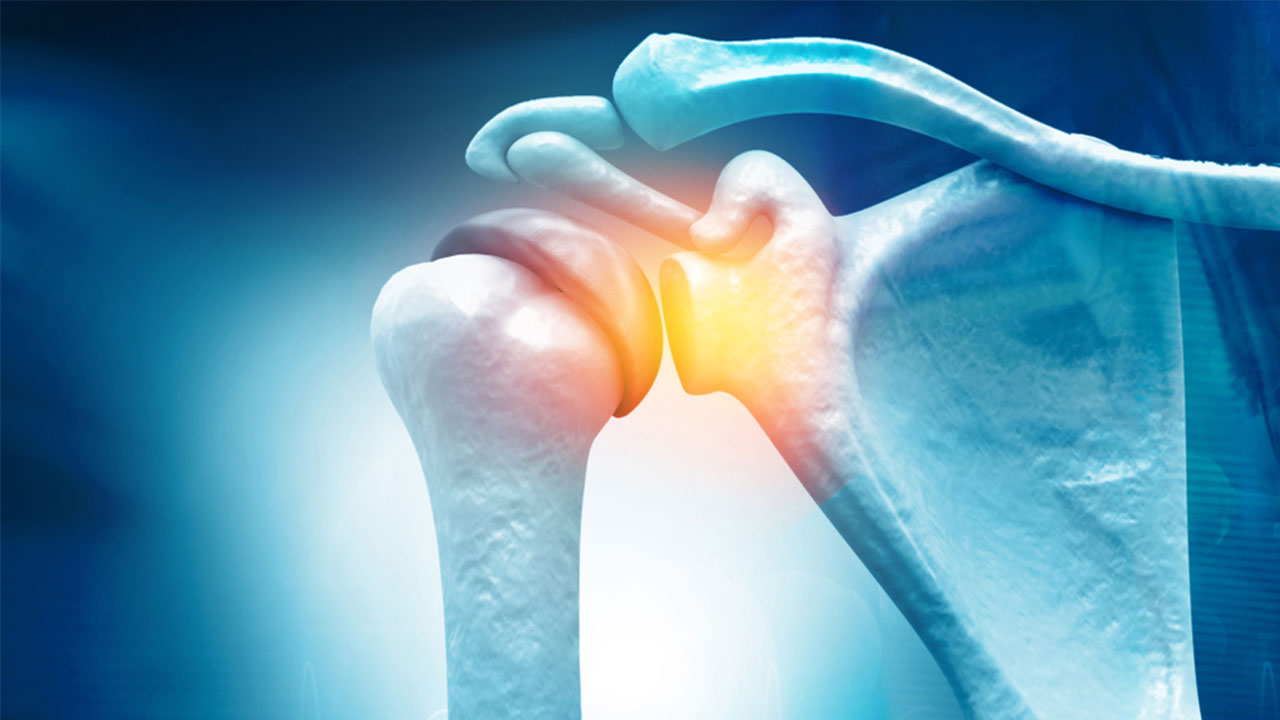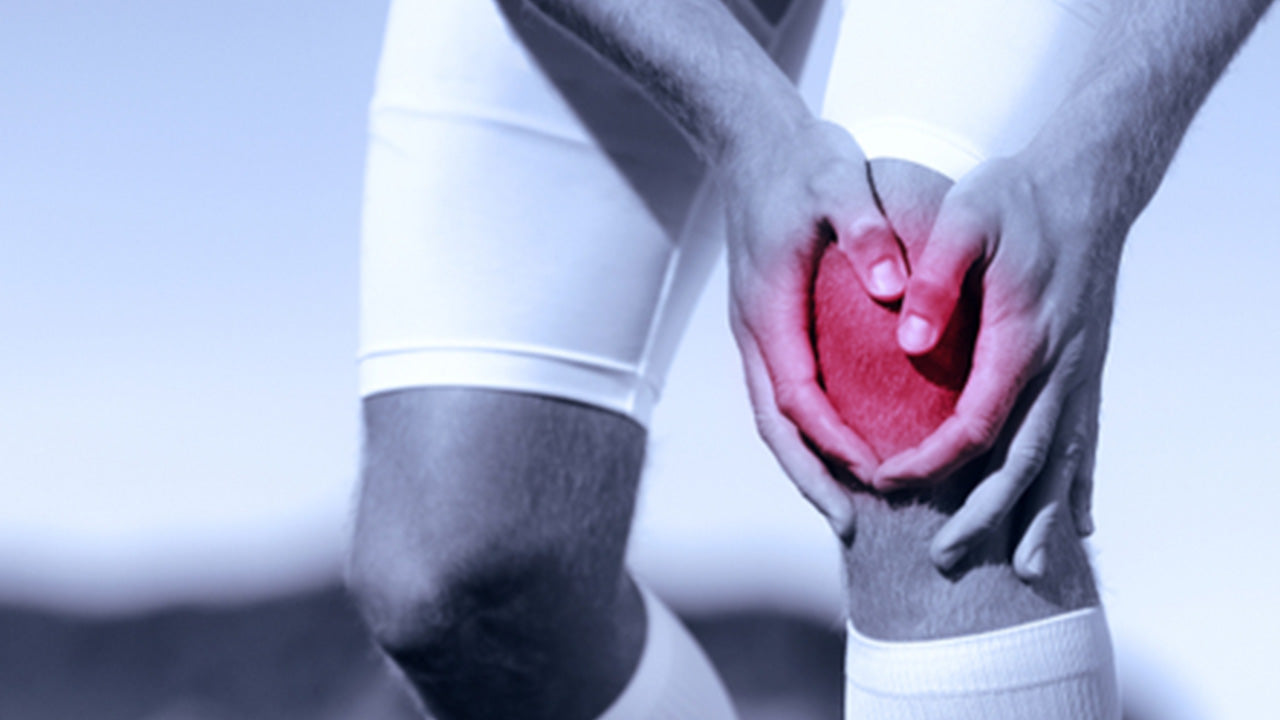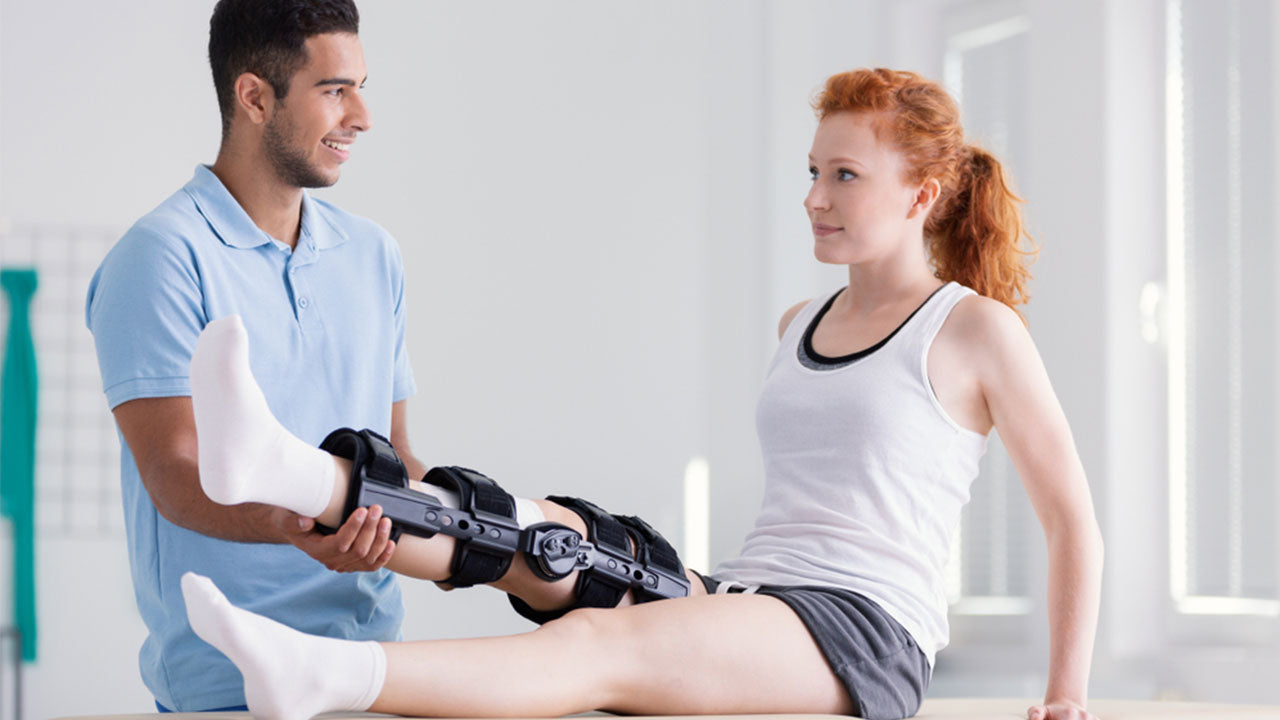Rotator Cuff Surgery Recovery Timeline
 By: by Amino Science
By: by Amino Science

What does shoulder surgery for a torn rotator cuff tendon entail, and how much time does it take to make a full recovery? We have the details of what happens during a rotator cuff injury, the symptoms you need to identify as quickly as possible, plus what you can expect from the rotator cuff surgery recovery timeline.
The Shoulder Joint and the Rotator Cuff: An Anatomy Overview
Rotator cuff tears are rather common, sometimes seen in sports medicine due to injury (tennis, anyone?), and sometimes the result of the natural wear and tear of aging or repeated use. Problems arise when the front of the scapula rubs against or cuts into the tendon, causing inflammation and partial or complete rotator cuff tears.
The rotator cuff stabilizes the shoulder joint, allowing for shoulder movement and granting the arm enough strength and power to pitch a ball, swing a sledgehammer, or playfully toss a child over your head.
There are four muscles and their respective tendons (which connect muscle to bone, whereas ligaments connect bone to bone) associated with the rotator cuff, all responsible for the lifting and rotating motion of your arm. Here are those muscles.
- Subscapularis: The muscle that helps rotate the arm inwards and is located at the front of the shoulder.
- Supraspinatus: A small shoulder muscle of the upper back that helps to lift or elevate the arm.
- Infraspinatus: A thick triangular muscle that hovers wing-like over each shoulder blade and externally rotates the arm and stabilizes the shoulder joint.
- Teres minor: This muscle is located at the back of your shoulders and enables the arm to rotate outwards.
The rotator cuff itself is the link between the humerus bone (upper arm) and your shoulder blade. Also present in the joint are lubricating sacs called bursae that help to cushion and lubricate this joint and many others throughout the body. When the shoulder is injured, the bursa sacs may become inflamed and contribute to shoulder pain.

Rotator Cuff Tear: Types
When the rotator cuff tendon is torn, the arm it's attached to loses a large amount of function, halting your normal activities in their tracks—movements as common as turning the steering wheel of your car or fishing your keys out of your pocket. Rotator tears vary in severity.
- Partial rotator cuff tears: An incomplete tendon tear is not good, but the tendon repair prospects are much better as the tendon is not completely severed.
- Complete rotator cuff tears: Most rotator cuff tears, unfortunately, are complete tears (also known as full-thickness tears) that require a surgical procedure to repair.
Rotator Cuff Tears: Causes and Symptoms
Many actions or accidents can cause rotator cuff tears, including falling down on an outstretched arm (an acute tear that may come with a dislocated shoulder or broken collarbone) or shoulder injury caused by aging and overuse (a degenerative tear).
Repetitive stress can contribute to degenerative damage. This stress can come from sports like rowing, baseball, tennis, and weightlifting, which involve the same motion performed again and again. Another contributing factor could be the development of bone spurs (bone overgrowth) that then irritate and fray your tendons as you move about normally. Yet another factor could be the loss of ample blood flow to the area caused by aging that slows down healing and allows minor damage to compound like accruing interest.
Regardless of what causes your rotator cuff injury, it's important to identify the symptoms as soon as possible to prevent possible irreversible damage. These include:
- A crackling sensation when you move your shoulder (crepitus)
- Weakness in lifting or rotating the arm
- Pain at rest and/or at night (especially when lying on the afflicted shoulder)
- Pain when lifting or lowering the arm
- Sudden, intense pain at the time of injury, possibly with a snapping sensation
It's easier to identify an acute tear than an injury due to overuse, as those symptoms have a slow onset and can easily be attributed to general aches. Degenerative pain is often easily masked via the use of over-the-counter pain medications like ibuprofen, at first.
If your shoulder pain persists and NSAIDs like aspirin no longer work for pain management, it's a sign that there's an underlying issue and it's advised that you see a medical professional, an orthopedic surgeon, or even a physical therapist as soon as possible for advice.
Rotator Cuff Tear Diagnosis
A doctor will most likely begin the diagnostic process by taking your medical history and asking specific questions about the nature and duration of your shoulder pain.
Next may be a physical examination to test your shoulder strength, and imaging tests like X-rays and MRIs may be ordered to decide whether you need a surgical procedure and what type of surgery is best for your condition. That decision will hinge on your general health, activity level, the size of the tear, and more, all issues that must be addressed one-on-one with your health care provider.
Rotator Cuff Treatment Options
A tear to the rotator cuff muscle or tendon may not be able to heal on its own, but every case varies.
- Nonsurgical treatment options: If you're one of the lucky 80% of patients who do not require surgical intervention, your treatment options may involve modifying your activities (no more tennis), relying on anti-inflammatory medications or supplements, taking up strengthening exercises recommended by a physical therapist, steroid injections, or just plain old-fashioned rest.
- Surgical treatment options: Doctors may try nonsurgical options first, but if those fail to be adequate enough or the injury so severe that surgery is the only hope you have of restoring functionality, then arthroscopic surgery may be needed to reattach the rotator cuff tendon to the arm bone (arthroscopy is also known as keyhole surgery, more on this below).
The highlights of nonsurgical remedy include avoiding potential risk factors like permanent stiffness, infections, complications from anesthesia, or lengthy recovery time. However, sometimes surgery is truly the only option, and fortunately there are ways to safely speed up your recovery time.

Rotator Cuff Tear Surgery
Rotator cuff repair surgery is performed under general anesthetic to help relieve pain and restore full motion to the arm and shoulder. A nerve block is often performed prior to the anesthesia, a procedure that temporarily blocks the shoulder and arm's feeling, allowing for less pain medication to be necessary during the procedure and recovery. This reduces grogginess post-op and is far safer for the patient.
Arthroscopic rotator cuff repair, aka keyhole surgery, is another way physicians help their patients avoid unnecessary pain, lengthy follow-up rehab, and excessive scar tissue. Arthroscopic procedures are done with minimally invasive tools and techniques, avoiding large incisions, reducing infection opportunities, and shortening recovery times.
While you're under the knife, a small "keyhole" incision is made, and the surgeon reattaches the tendon to the bone using precise arthroscopic instruments (like an arthroscope). Sometimes the bursa (one of over 150 lubricating sacs throughout the body) is removed during the procedure to help reduce inflammation, and the bone above the bursa may be resected to clear extra space for the tendon to move without bone interference.
Dissolving stitches are then utilized so there's no need for subsequent surgery to remove them, and with such a small incision, patients are able to return to normal bathing quickly after they are sent home.

Rotator Cuff Surgery Recovery Timeline
Even in the best-case scenario with top-of-the-line techniques, recovery still takes time. Here's a breakdown of the timeline for rotator cuff surgery recovery.
- Week 2: Bandages can be removed 2 weeks after an arthroscopic procedure. You will need to attend physical therapy rehab during this time (and for at least 4 weeks) to regain your strength. You may be prescribed drugs to help with pain relief.
- Week 4: The sling you'll be given to help support the weight of your arm may be set aside after a month of recovery. You can also drive a car again if you're able. This is an excellent time to switch to a hydrotherapy (water) exercise program.
- Week 6: You can return to minor daily activities, but your strength and range of motion will still need more recovery time before you can return to sports or jobs that require heavy lifting.
- Week 8: Once you're 2 months post-op, it's time to start targeting function-specific power with active motion exercises, and you may return to work and sporting activities if you and your doctor feel it's advised.
Recover Better, Faster, Stronger
Full recovery may take up to 6 months to feel like yourself again after a surgical repair. What may help speed up recovery and more importantly a rapid return to full strength is targeted amino acid supplementation. Rebuilding soft tissues like muscles, collagen, and connective tissues require first and foremost the nine essential amino acids that humans cannot synthesize themselves. Your doctor may advise consuming a protein shake each day to increase your supply of these amino acids, but an essential amino acid supplement can do the same much faster. Learn how here.

Up to 25% off Amino
Shop NowTAGS: Injury
Join the Community
Comments (0)
Most Craveable Recipes




 833-264-6620
833-264-6620



















